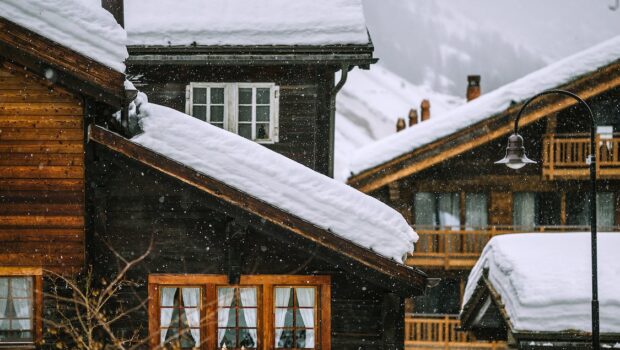5 Effective Ways to Protect Your Roof from Snow Damage This Winter
How to protect your roof this winter from snow:
During the winter months, snow can seriously threaten the roof’s integrity. Heavy snow loads can stress the roof, leading to damage, leaks, and collapse in extreme cases. This article will explore effective ways to protect a roof from snow damage.
Regular Inspection and Maintenance
The first step in protecting a roof from snow damage is to conduct regular inspections and maintenance. Inspecting the roof before winter can identify any existing issues that may be exacerbated by snow and ice buildup. These issues can prevent them from worsening and causing more significant problems.
During the winter, it is important to conduct regular inspections to monitor the snow buildup on the roof. If snow accumulates on the roof, it can stress the structure, increasing the risk of damage. If the snow is not removed promptly, it can cause ice dams to form along the roof, leading to leaks and water damage. Regular inspections help identify any areas of concern.
Install Snow Brackets
Snow brackets, also known as snow guards or snow fences, are devices used to prevent snow and ice from sliding off a sloped roof. They create friction between the snow and the roof surface, causing it to melt slowly and allowing it to drip off the roof in a controlled manner. By holding the snow in place, snow brackets prevent ice dams from forming along the roof’s edge and reduce the risk of damage caused by falling snow and ice.
Snow brackets are available in various designs and materials, including metal, plastic, and rubber. They can be installed in various configurations to suit the specific needs of the building. A roofing professional can help determine the appropriate snow bracket system for a particular roof.
Clear Snow Buildup

Photo by Nataliya Vaitkevich:- https://www.pexels.com/photo/man-and-woman-holding-shovels-6490160/
Clearing snow buildup from the roof is one of the most effective ways to prevent damage caused by heavy snow loads. However, this can be dangerous, and trained professionals should only attempt it. Instead, roofers use specialized equipment, such as snow rakes and power washers, to safely remove snow from the roof.
It is important to note that not all snow should be removed from the roof. Removing all the snow can cause damage to the roof itself. Instead, only the excess snow should be removed to reduce the weight load on the roof.
Improve Attic Ventilation and Insulation
Attic ventilation allows heat to escape from the attic, reducing the risk of ice dams forming along the roof’s edge. Ice dams form when heat melts snow on the roof, causing it to flow down to the roof’s edge and freeze, creating a dam.
Insulating the attic also helps to prevent heat loss from the building, reducing the risk of ice dams forming. Proper insulation can also help prevent heat from escaping the building, reducing energy costs during the winter.
Install Heating Cables
Heating cables, also known as heat tape or roof de-icing cables, can be installed along the roof’s edge to prevent ice dams from forming. The cables are designed to melt snow and ice, allowing water to drain off the roof properly. They are particularly effective in areas with a history of ice dam problems.
A professional should install heating cables, which require proper placement and electrical connections to function correctly. They should also be monitored regularly to ensure that they
Snow can be a beautiful and exciting part of winter, but it can also pose a significant threat to the safety and structural integrity of your house roof. Heavy snowfall and ice buildup can cause extensive damage to your roof, leading to leaks, collapses, and costly repairs. In this article, we will explore some of the common types of damage snow can cause to a roof.
Roof Collapse
Perhaps the most severe form of damage that snow can cause to a roof is collapse. A roof collapse can occur when snow and ice buildup weight exceeds the roof’s load capacity. While modern building codes require roofs to be designed to withstand a specific amount of snow load, prolonged heavy snowfall can still cause significant damage.
The risk of roof collapse increases when the snow is wet and heavy, as it is dense and can add more weight to the roof. Flat roofs and roofs with low slopes are particularly susceptible to collapse, as they have a larger surface area for the snow to accumulate.
Ice Dams

Photo by Karolina Grabowska:- https://www.pexels.com/photo/hand-in-glove-shoveling-off-snow-with-red-plastic-shovel-and-tree-in-background-6952501/
Another common type of damage that snow can cause to a roof is ice dams. Ice dams form when snow on the roof melts due to heat escaping from the building’s interior. The melted snow flows down the roof and then freezes again at the roof’s edge, creating a dam preventing further water from draining. This can lead to water backup, leaks in the roof, and damage to the building’s interior.
Ice dams can also cause damage to the roof itself, as the weight of the ice can put stress on the roof structure, leading to cracking and deformation. Ice dams are particularly common in areas with fluctuating temperatures, where the snow melts and refreezes repeatedly.
Water Damage
Heavy snowfall can also lead to water damage on the roof. As snow accumulates on the roof, it can create pools of water that seep into the roof’s cracks and crevices. This can lead to water damage inside the building as the water drips down from the ceiling and walls.
Water damage can also cause mold and mildew growth, which can be harmful to your health and the structural integrity of your home. If left untreated, water damage can also lead to rotting wood and damage to the building’s insulation.
Shingle Damage
Snow and ice buildup can also cause damage to the shingles on the roof. As snow and ice melt and refreeze, it can create ice wedges that lift the shingles, causing them to become loose or even fall off the roof. This can create entry points for water, leading to leaks and further damage to the roof and the building’s interior.
Gutter Damage
Finally, snow and ice buildup can also cause damage to the gutters on the roof. Heavy snow loads can put stress on the gutters, causing them to bend or even break off the roof. This can lead to water backup and leaks in the roof, as well as damage to the building’s foundation and landscaping.
In conclusion, snow can cause significant damage to a roof, leading to leaks, collapses, and costly repairs. It is essential to be aware of the risks of snow buildup on your roof and take the necessary steps to protect your home. Regular inspections, maintenance, and the installation of snow retention systems can help reduce the risk of damage caused by snow and ice buildup.
Header photo credit:- https://www.pexels.com/photo/wooden-houses-covered-with-snow-in-mountainous-valley-in-winter-4969871/





















Merci pour votre commentaire intéressant, Annick ! Désolée pour la réponse tardive. Nous avons dû restructurer notre équipe. Nous sommes…